When it comes to creating an inviting outdoor living area, the foundation you choose plays a pivotal role in both aesthetics and functionality. The right outdoor flooring can seamlessly integrate your indoor and outdoor spaces while withstanding the capricious nature of weather elements. Whether you’re revamping a patio, designing a backyard oasis, or upgrading a pool deck, selecting the appropriate flooring material requires careful deliberation.
The multifarious options available today range from natural wood that exudes warmth to contemporary concrete that offers clean lines and durability. Each material brings its unique characteristics, maintenance requirements, and visual appeal to your outdoor space. As you embark on this transformative journey, consider how your flooring choice will complement your home’s architectural style, withstand your local climate conditions, and accommodate your lifestyle needs.
This comprehensive guide explores twelve exceptional outdoor flooring ideas that combine practicality with aesthetic allure, helping you navigate through the myriad of possibilities to find the perfect foundation for your outdoor sanctuary.
1. Wooden Decking
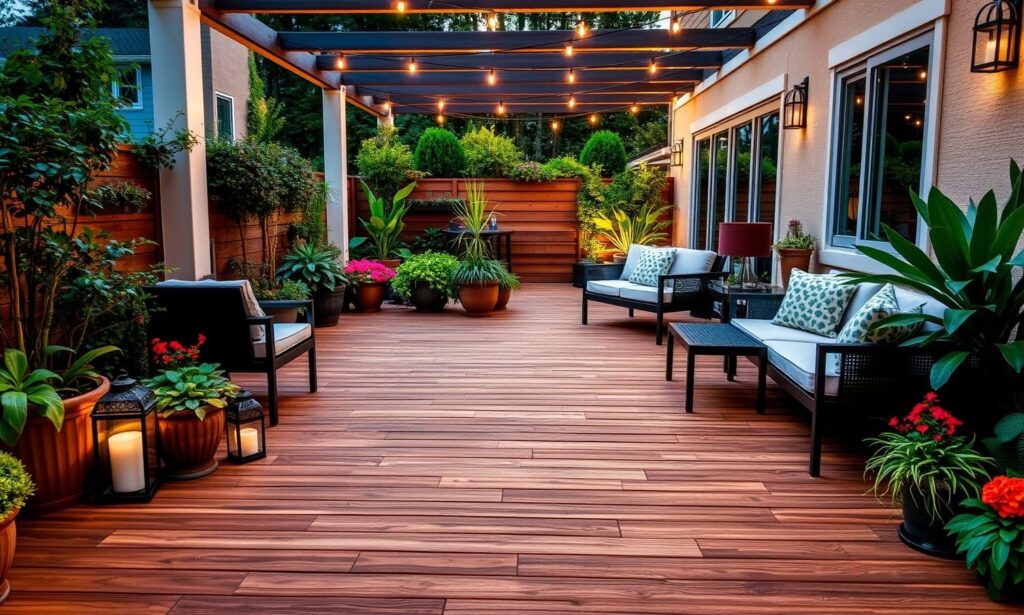
The timeless appeal of wooden decking continues to captivate homeowners seeking to create a warm, natural outdoor space. Traditional hardwoods like teak, cedar, and ipe offer remarkable durability while developing a distinguished patina over time that adds character to your outdoor living area. These materials naturally resist rot and insect damage, making them suitable for various climate conditions.
For the eco-conscious homeowner, composite decking presents an excellent alternative. Manufactured from recycled wood fibers and plastic polymers, these boards mimic the appearance of natural wood while eliminating common maintenance concerns such as splitting, warping, and fading. Additionally, composite decking doesn’t require staining or sealing, saving you considerable time and effort in long-term upkeep.
When installing wooden decking, proper spacing between boards ensures adequate drainage and prevents water accumulation, which could otherwise lead to premature deterioration. With regular maintenance consisting of annual cleaning and occasional resealing, wooden decking can serve as an elegant outdoor flooring solution for decades.
2. Natural Stone Pavers
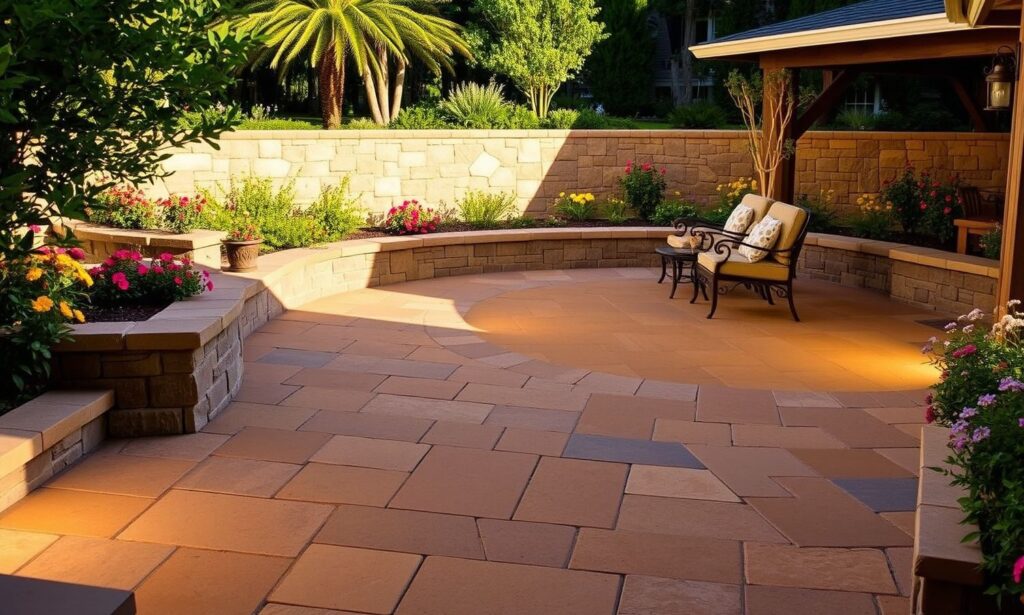
Natural stone pavers epitomize luxury and permanence in outdoor spaces, offering unparalleled durability and a connection to the earth’s raw beauty. Flagstone, slate, limestone, and travertine are among the popular options that provide distinct textures and color variations that simply cannot be replicated by synthetic materials. Each stone tells its own geological story, creating unique patterns across your patio or walkway.
These pavers adapt remarkably well to various design aesthetics, from rustic countryside charm to sophisticated modern minimalism. Their irregular shapes can be arranged in formal geometric patterns or casual, organic layouts depending on your design vision. The natural thermal properties of stone make it resistant to heat absorption, keeping your outdoor flooring cooler underfoot during hot summer days.
While the initial investment for natural stone may exceed other flooring options, its exceptional longevity and minimal maintenance requirements make it cost-effective over time. An occasional power washing and resealing every few years is typically all that’s needed to preserve its natural splendor and structural integrity.
3. Concrete Pavers
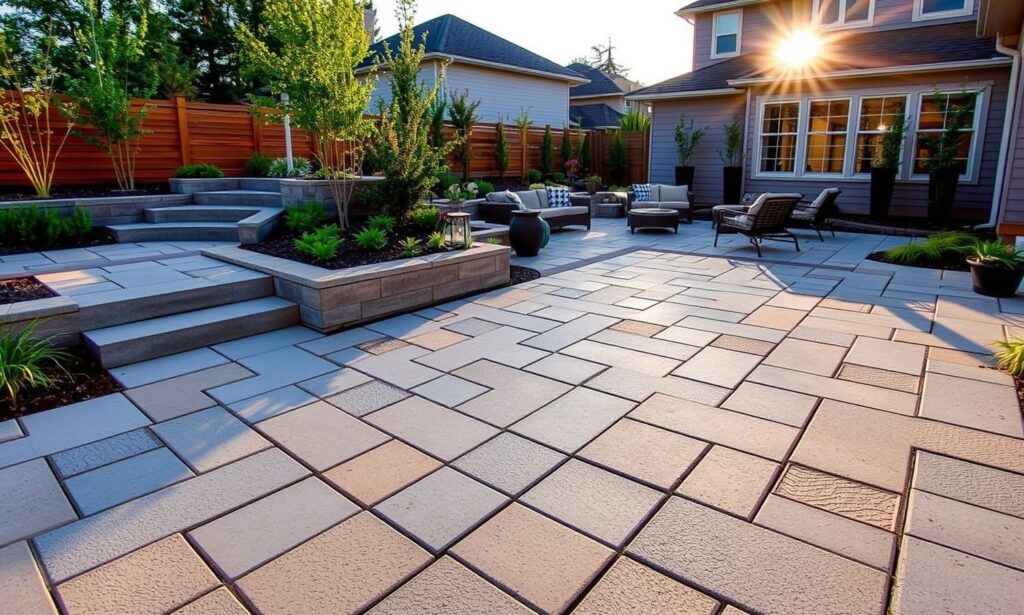
Concrete pavers have revolutionized outdoor flooring by offering remarkable versatility at an accessible price point. Available in countless shapes, sizes, and colors, these manufactured units can be arranged in intricate patterns that mimic more expensive materials like brick or natural stone. Modern manufacturing techniques allow for texturized surfaces that provide both visual interest and improved traction when wet.
The modular nature of concrete pavers makes them particularly advantageous for DIY enthusiasts or projects requiring future access to underground utilities. Unlike poured concrete, individual pavers can be easily removed and reinstalled if necessary, without compromising the integrity of the entire surface. This feature also allows for creative design flexibility, as patterns can incorporate multiple colors or transitional borders.
From an environmental perspective, permeable concrete pavers represent a sustainable choice by allowing rainwater to percolate through to the ground below, reducing runoff and supporting natural groundwater replenishment. With proper installation including a well-prepared base and quality edge restraints, concrete paver flooring can withstand decades of use while maintaining its structured appearance.
4. Brick Pavers
The enduring appeal of brick pavers stems from their distinctive character and proven reliability throughout centuries of use. Traditional clay bricks impart a sense of heritage and permanence to outdoor spaces, complementing both classical and contemporary architectural styles. Their warm, earthy tones ranging from deep reds to subtle buffs create a welcoming atmosphere in patios, walkways, and garden paths.
Beyond their aesthetic charm, brick pavers offer practical benefits including exceptional durability and relatively simple installation techniques. Their porous nature allows them to adapt to temperature fluctuations without cracking, making them particularly suitable for regions experiencing freeze-thaw cycles. As they age, bricks develop a pleasant patina that enhances rather than diminishes their visual appeal.
When designing with brick pavers, consider exploring various laying patterns such as herringbone, basket weave, or running bond to create visual interest. These patterns not only influence the aesthetic outcome but also affect the structural integrity of the surface, with certain arrangements providing greater stability for high-traffic areas or curved pathways.
5. Porcelain Tiles
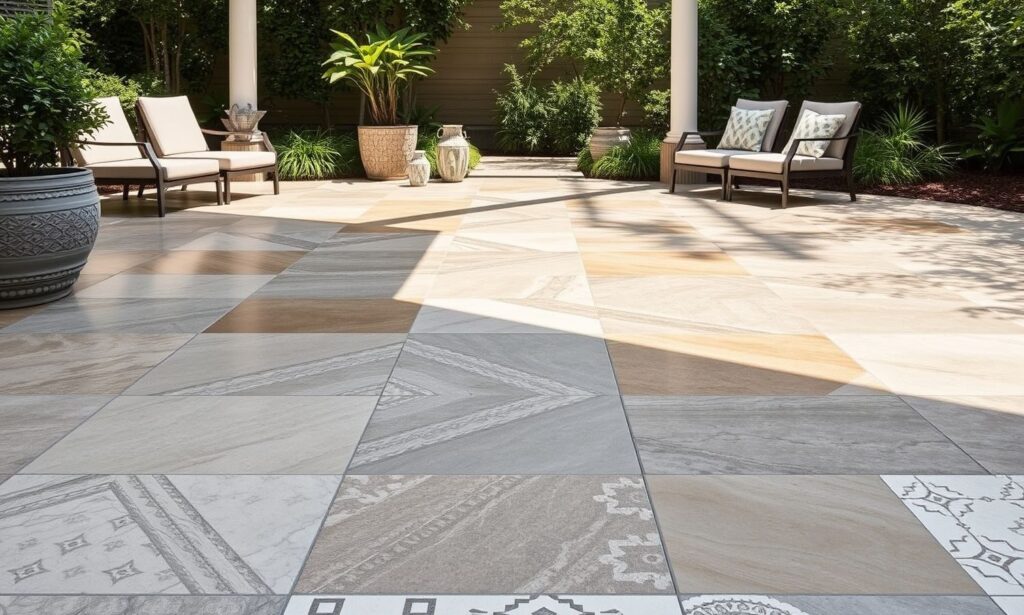
Porcelain tiles have emerged as a sophisticated solution for outdoor flooring, bridging the gap between indoor refinement and outdoor resilience. Manufactured under extreme heat and pressure, these tiles offer exceptional strength while maintaining a sleek, contemporary aesthetic. Advanced printing technologies allow porcelain to convincingly mimic luxury materials like marble, wood, or concrete while providing superior weather resistance.
One of the most significant advantages of porcelain tiles is their remarkably low maintenance requirements. Their non-porous surface resists staining, doesn’t harbor mold or mildew, and can be cleaned with standard household products. This characteristic makes them particularly suitable for pool surrounds, outdoor kitchens, and dining areas where spills are likely to occur.
When selecting porcelain tiles for outdoor applications, prioritize products specifically rated for exterior use with appropriate slip resistance. Installation requires precision and expertise to ensure proper adhesion and grout application that can withstand outdoor conditions. Although the initial investment may be higher than some alternatives, the combination of aesthetic versatility and minimal upkeep makes porcelain tiles an increasingly popular choice for discerning homeowners.
6. Gravel and Crushed Stone
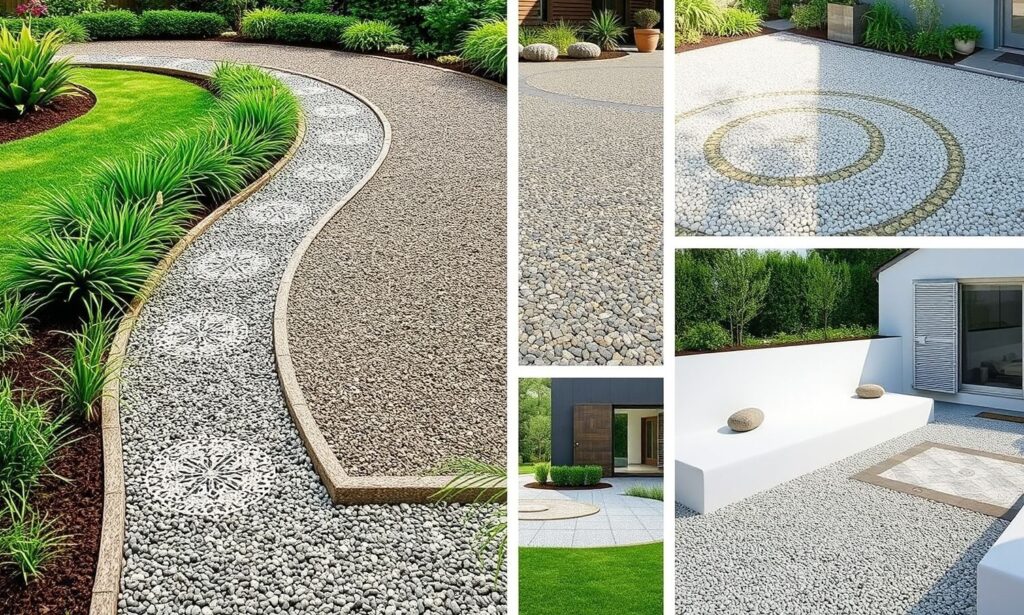
Gravel and crushed stone offer a refreshingly unpretentious yet versatile approach to outdoor flooring. These loose materials bring textural interest and a pleasing auditory experience as they softly crunch underfoot. Available in various sizes, colors, and geological types, from fine pea gravel to chunky river rock, they can be selected to complement any landscape design theme.
The installation process is straightforward and generally less labor-intensive than many alternatives, making it accessible for DIY projects. A properly prepared base with landscape fabric prevents weed growth while maintaining drainage capabilities. The inherent permeability of gravel makes it an environmentally responsible choice that minimizes runoff and supports natural water distribution throughout your property.
Maintenance primarily involves occasional raking to redistribute stones and periodic topping up to restore areas that may have thinned over time. For areas with frequent foot traffic, consider stabilizing products that help keep gravel in place while maintaining its natural appearance. The informality of gravel creates a transitional element between manicured spaces and natural landscaping, perfect for garden paths, meditation areas, or casual seating zones.
7. Rubber Pavers
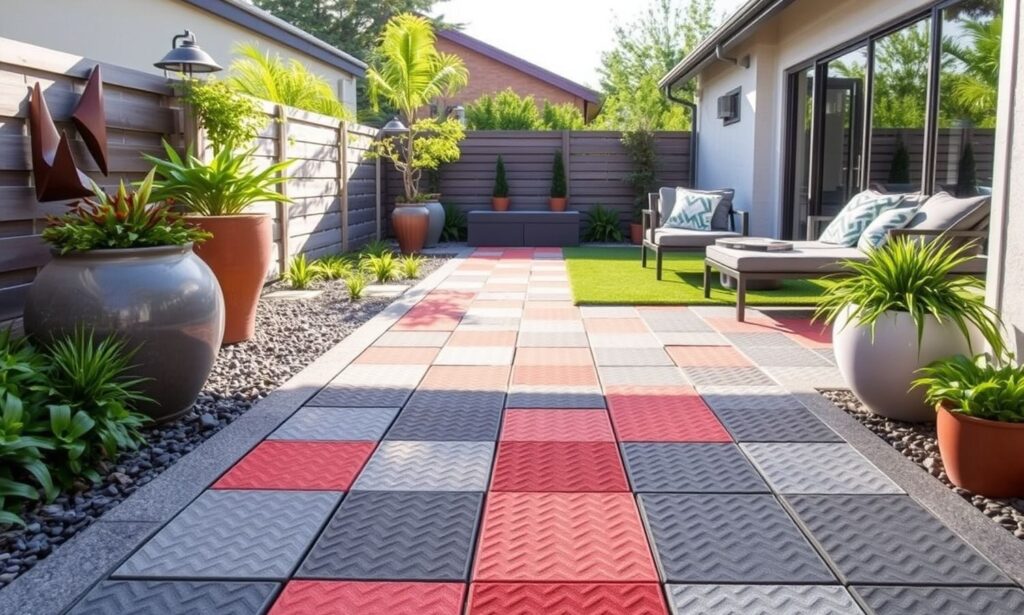
Rubber pavers represent an innovative solution that prioritizes safety and comfort in outdoor flooring applications. Predominantly manufactured from recycled tires, these eco-friendly units divert substantial waste from landfills while creating a resilient surface ideal for play areas, pool surrounds, and exercise spaces. Their inherent shock-absorbing properties significantly reduce the risk of injury from falls, making them particularly valuable in family-oriented environments.
The cushioned texture of rubber pavers provides exceptional comfort underfoot, creating a noticeable difference when compared to harder surfaces like concrete or stone. This quality proves especially beneficial in areas where people might stand for extended periods, such as outdoor cooking stations or workshop spaces. Additionally, rubber maintains a moderate temperature even in direct sunlight, preventing the scorching effect common with traditional paving materials.
Installation options vary from interlocking systems that can be easily assembled without adhesives to more permanent applications using specialized outdoor adhesives. Most products come in earth tones and geometric shapes that blend discreetly with natural surroundings or can be arranged in playful patterns for children’s areas. With minimal maintenance requirements and impressive durability, rubber pavers offer a practical solution that doesn’t sacrifice aesthetics.
8. Artificial Grass
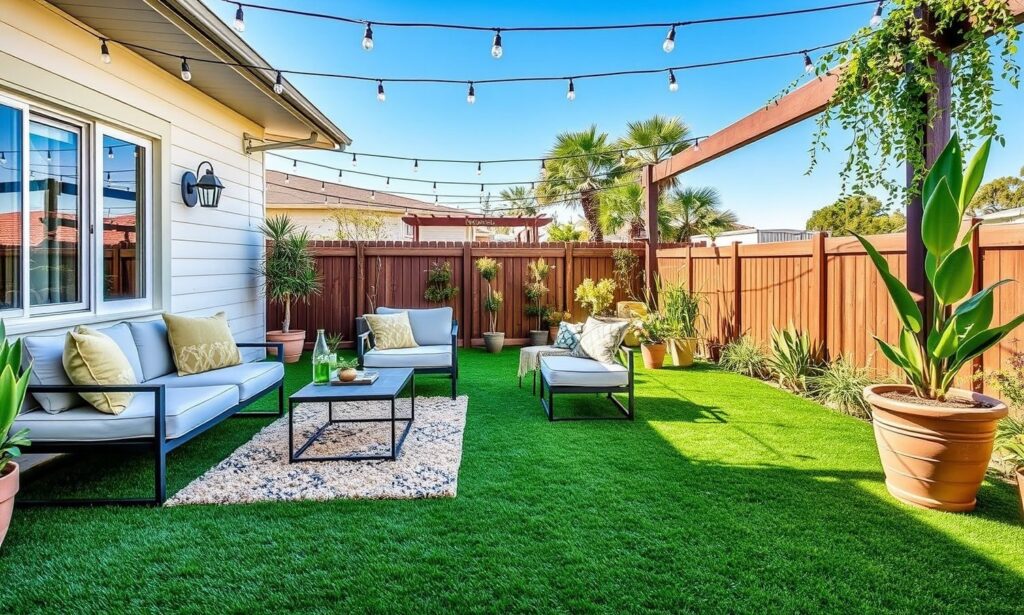
Artificial grass has evolved dramatically from its earlier iterations, now presenting a sophisticated alternative to natural lawns that convincingly replicates the appearance and texture of live turf. Modern manufacturing techniques produce blades with varied colors, heights, and thicknesses that create a remarkably authentic look while eliminating the maintenance demands of natural grass. The consistent green appearance throughout all seasons contributes to year-round curb appeal.
From a practical perspective, artificial grass excels in challenging environments where natural grass struggles to thrive. Areas with heavy shade, poor soil conditions, or water restrictions can be transformed into lush green spaces without fighting against nature. The permeable backing allows for proper drainage, preventing puddles while supporting the ecosystem by returning rainwater to the ground below.
Installation requires thorough site preparation, including removing existing vegetation, creating a stable base, and installing proper drainage systems. While this process represents a significant initial investment, the elimination of ongoing costs for water, fertilizer, mowing, and other maintenance quickly offsets the upfront expense. For busy homeowners or those with allergies to grass pollen, artificial turf provides a practical solution without sacrificing the aesthetic appeal of a verdant lawn.
9. Interlocking Deck Tiles
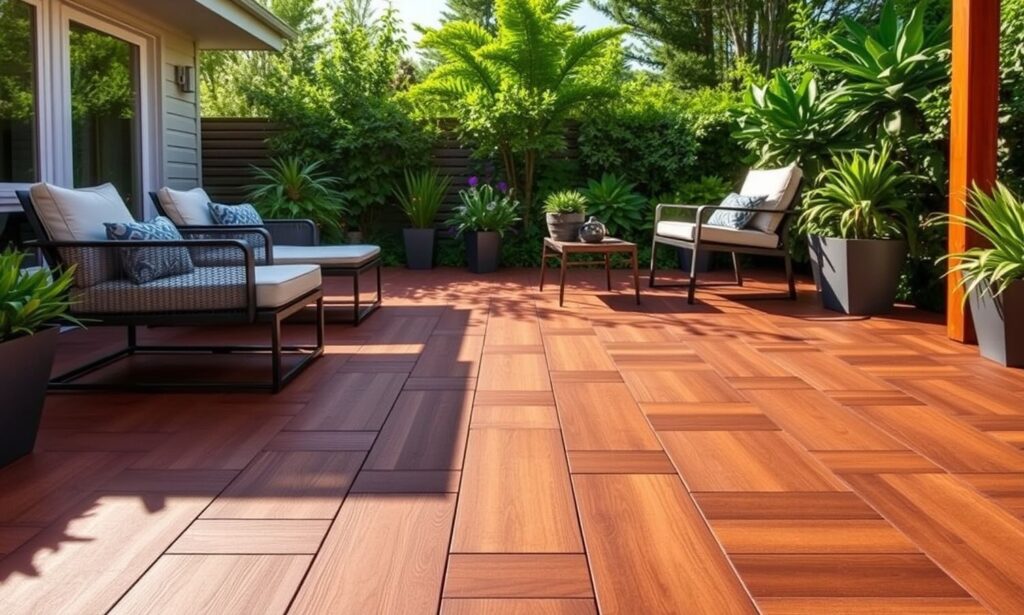
Interlocking deck tiles have revolutionized outdoor flooring renovations by offering remarkable installation ease combined with impressive design flexibility. These modular units typically measure one square foot and feature connecting mechanisms that allow them to snap together without tools or adhesives. This user-friendly approach makes them particularly appealing for temporary installations, rental properties, or homeowners seeking to upgrade their outdoor spaces without permanent modifications.
Available in a wide array of materials including wood, composite, stone, and plastic polymers, these tiles can transform concrete balconies, worn decks, or plain patios into stylish entertaining areas within hours. Their elevated design creates a slight gap between the tile and the underlying surface, promoting airflow and preventing moisture accumulation. This characteristic makes them especially valuable for covering problematic surfaces that might otherwise require extensive repairs.
The modular nature of these tiles encourages creative expression through mixing materials, creating borders, or designing custom patterns. When damage occurs or styles change, individual tiles can be replaced without disrupting the entire installation. For homeowners who anticipate changing needs or multiple moves, these portable flooring solutions can be disassembled and reinstalled at new locations, providing exceptional long-term value.
10. Stamped Concrete
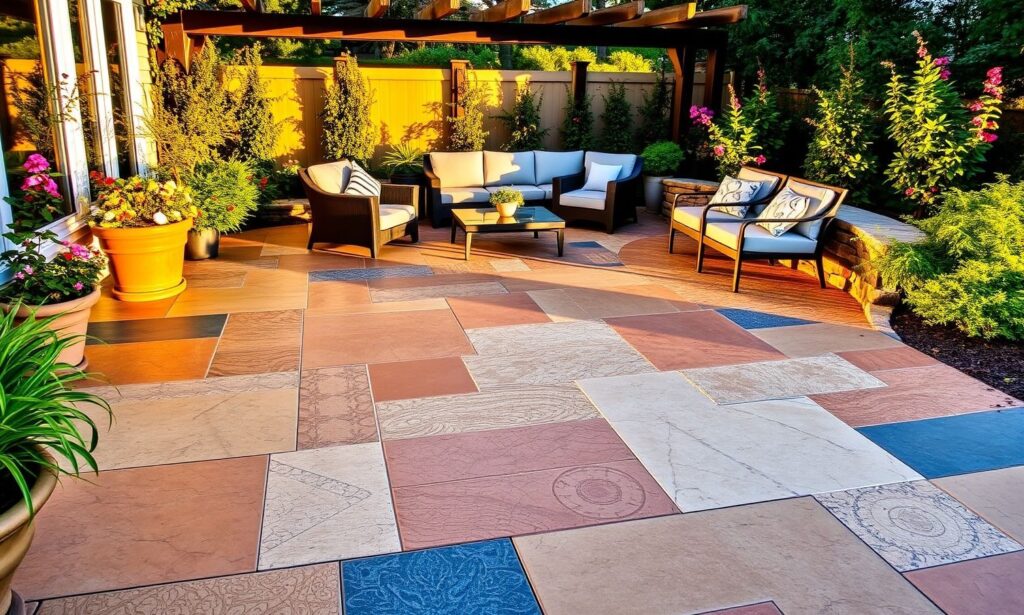
Stamped concrete represents an ingenious application of modern construction technology to achieve high-end aesthetics at moderate cost. This versatile technique involves impressing patterns and textures into freshly poured concrete to mimic premium materials like flagstone, brick, or wood planks. Advanced coloring methods, including integral pigments and surface stains, further enhance the realistic appearance while ensuring the color permeates throughout the material.
The seamless nature of stamped concrete creates a uniform surface free from the weed-prone joints typical of individual pavers. This characteristic significantly reduces maintenance requirements while providing a stable foundation for outdoor furniture. Additionally, the continuous surface proves particularly valuable for universal design considerations, offering smooth transitions for wheelchairs, walkers, or strollers.
Professional installation is essential to achieve optimal results, as the process involves precise timing during the concrete curing process. While this requirement increases initial costs, the durability of properly installed stamped concrete delivers exceptional value over its lifespan. Periodic resealing protects both the color and texture, maintaining the surface’s aesthetic appeal and structural integrity through changing seasons and environmental conditions.
11. Bamboo Decking
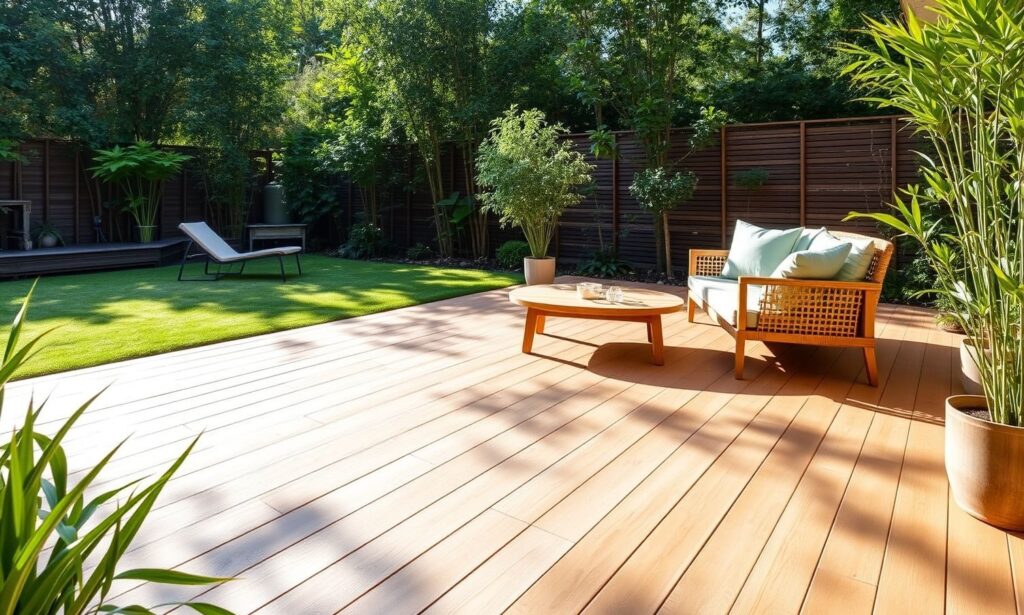
Bamboo decking presents an environmentally conscious alternative to traditional hardwoods, harnessing the remarkable properties of this rapidly renewable grass species. Harvested from plants that reach maturity in just 5-7 years (compared to decades for conventional timber), bamboo represents one of the most sustainable building materials available today. Advanced manufacturing processes compress bamboo fibers to create boards with exceptional hardness and dimensional stability.
The distinctive grain patterns and warm golden tones of bamboo bring a touch of exotic elegance to outdoor spaces, creating visual interest that complements both contemporary and traditional design schemes. Over time, untreated bamboo weatherizes to a distinguished silver-gray patina similar to teak, though UV-protective finishes can maintain the original color if preferred. This natural evolution allows the material to develop character while remaining structurally sound.
Installation follows similar principles to conventional wood decking, though bamboo’s unique properties require attention to specific manufacturer guidelines regarding expansion gaps and fastening methods. When properly installed and maintained with annual cleaning and occasional resealing, bamboo decking can withstand the elements for 15-25 years, offering impressive longevity while maintaining its distinctive aesthetic appeal.
12. Cork Flooring
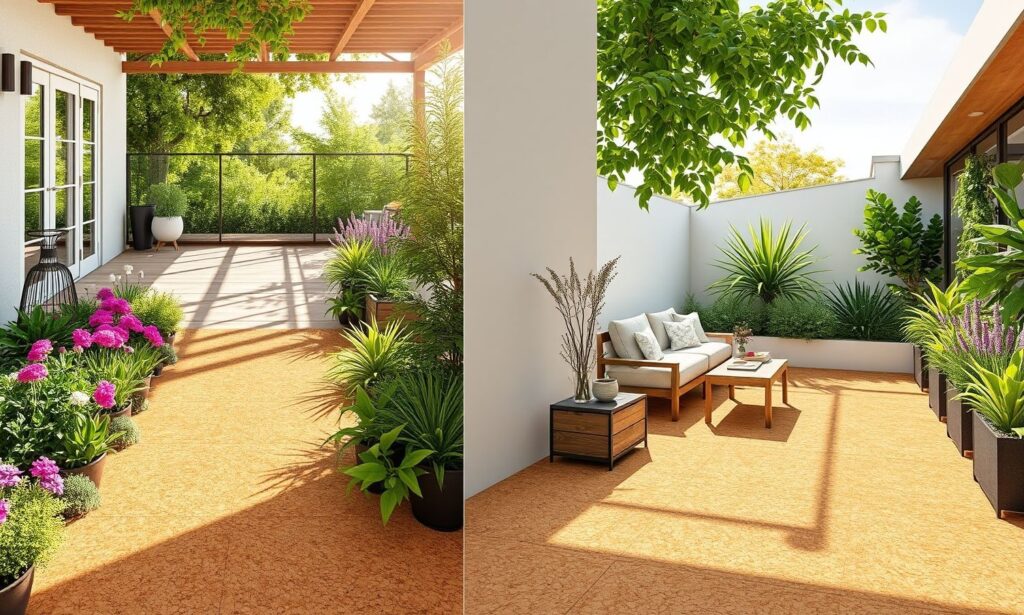
Cork flooring represents an innovative yet historically rooted solution for transitional outdoor spaces like covered patios, sunrooms, and screened porches. Harvested from the bark of cork oak trees without harming the living organism, this material epitomizes sustainable production practices. The natural cellular structure of cork creates inherent insulating properties that keep the surface comfortable underfoot in varying temperatures.
Beyond comfort, cork offers practical advantages including natural water resistance and resilience against mold and mildew growth. These characteristics make it particularly suitable for humid climates or areas prone to occasional moisture exposure. The material’s natural elasticity provides excellent shock absorption, reducing fatigue during extended periods of standing and minimizing breakage when items are dropped on the surface.
For outdoor applications, specially formulated cork tiles with enhanced UV protection and water-resistant binders prevent deterioration from sun exposure and moisture. Installation typically involves adhesive application similar to indoor cork flooring, though floating-click systems are available for less permanent applications. When sealed properly and maintained with gentle cleaning methods, exterior-grade cork flooring combines distinctive natural beauty with impressive performance characteristics.
Conclusion
Selecting the ideal outdoor flooring solution involves balancing aesthetic preferences with practical considerations including climate compatibility, maintenance requirements, and budget constraints.
The twelve options explored in this guide demonstrate the remarkable diversity available to today’s homeowners, from traditional materials that have stood the test of time to innovative alternatives that address contemporary needs for sustainability and easy maintenance.
Remember that your outdoor flooring serves as both a design element and a functional foundation for your lifestyle. Consider how each space will be used—from entertaining guests to creating play areas for children—and choose materials that enhance these activities.
Many successful outdoor designs incorporate multiple flooring types to define different zones while creating visual interest through textural contrasts and complementary colors.
By investing thoughtful consideration into your outdoor flooring selection, you create more than just a practical surface—you establish the foundation for countless memorable moments enjoyed in your personal outdoor sanctuary for years to come.

